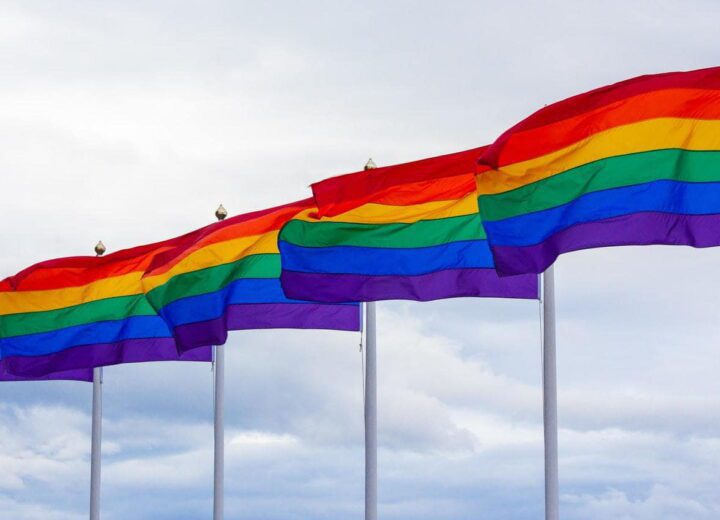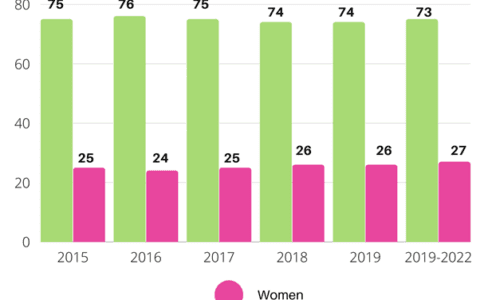LGBTQ+ in STEM

The underrepresentation of women, racial and ethnic minorities in science, technology, engineering and mathematics (STEM) has received a lot of attention over the years, however, one group who have almost fallen under the radar is the LGBTQ+ community.
There has been less research conducted and only a small amount of press surrounding LGBTQ+ – lesbian, gay, bisexual, transgender, queer (or questioning), and others, in STEM. However, the reports which have emerged paint a worrying picture.
LGBTQ+ in STEM
When it comes to looking at actual stats of the number of LGBTQ+ people currently working in STEM, they are very difficult to find. Research provided by the Royal Society found that only 39.6% of people in science in the UK are women, 60.4% are men, but there is no mention of those who are non-binary.
Overall estimates suggest that LGBTQ+ people are roughly 20% less represented in STEM fields than expected. Not only this, but LGBTQ+ people who are part of the STEM workforce report more negative workplace experiences than their non-LGBTQ+ counterparts.
Another report which focused on physics in particular draws attention to some of the major issues faced by sexual minority STEM professionals, which included a “heterosexist climate that reinforces gender role stereotypes in STEM work environments.” This kind of environment can be the reason for many LGBTQ+ people remaining closeted at work. In fact, a report conducted in 2013 by the Queer in STEM survey found that more than 40% of LGBTQ+ people in STEM are not out. Of the LGBTQ+ people who have decided to come out at work, roughly 70% report feeling uncomfortable in their department.
There has also been research in the past that found a third of LGBTQ+ people in tech believe there is a wage gap between themselves and their heterosexual counterparts, and 30% of young people choose to disregard the STEM sectors altogether through fear of discrimination.
Figures from the Inclusive Tech Alliance revealed that 19% of people in tech are women, 81% are men, and again, no figures for non-binary people. There are many datasets that don’t include intersectional data, for example, showing the percentage of women working in tech that are also gay or bi.
The Institute of Physics conducted more in-depth research, finding that 1.4% of people in the field identify as non-binary, but when asked about sexuality 83.5% identified as heterosexual, 5.2% identified as Bi, 3.4% identified as gay and 2.5% identified as “other”, with 4.5% entirely unaccounted for.
These numbers do reveal the lack of representation of LGBTQ+ community across STEM fields, and when you look at figures for senior leaders, the numbers are even more worrying. Inclusive Tech Alliance found that women only make up 12.6% of board members and 16.6% of senior executives in tech firms, and only 8.5% of senior leaders in tech are from a black, Asian or minority ethnic background.
It’s clear that we need to do more to both report on LGBTQ+ data in STEM, but also work harder to change the workplace environment so more people feel comfortable ‘coming out’ at work. These figures reveal that there is a general lack of understanding of the LGBTQ+ community, which can lead to limited support in the workplace.
It has been proven that diverse teams are more likely to be innovative and make scientific and technological breakthroughs. A diverse team is more likely to address a problem in different ways, and to find a successful solution.
An Inclusive Environment
Alfredo Carpineti, founder of charitable trust Pride in STEM, has highlighted the problem with the lack of data for this community and the difficulties they face in the STEM workplace.
“When talking about LGBTQ+ in the STEM fields, many people are more comfortable and open with their friends and family about their sexuality, rather than those in the workplace. Employees are expected to not act too gay, as a physicist this is mind blowing to me,” Carpineti says.
“If a senior physicist is telling you ‘employees are expected to not act too gay’ it means that there is some sort of scale of gayness that you can measure from zero to Elton John, where [on the scale] should a good physicist end up?”
It’s hugely important for employees to feel that they can be themselves at work, and usually these employees will perform better and be more successful. Therefore, by dictating the way people ‘should’ act at work, can be extremely damaging, especially to the LGBTQ+ community.
Feeling unable to share your full identity at work is both exhausting and isolating – this can also lead to it being challenging to find other people who can relate to the struggles you’re experiencing.
The Importance of Allies
There are lots of ways that society can do more to understand and support the LBGTQ+ community. On an individual level in the workplace, putting pronouns in email signatures is a signal that you are an ally who is learning about LGBTQ+ issues, you can proactively be an ally to others, and take part in mentorship programmes and awareness training.
Carpineti highlights the importance of inclusion in the workplace: “I believe we need an inclusive and intersectional revolution, making sure that we don’t just include people, [but] that they belong in an organisation at every level, and they can prosper, and they want to stay there, and if they have an issue that the issue is taken seriously and not dismissed.”
Carpineti says the idea that a “good scientist, or a good person in tech, is a white straight male archetype” is “absolutely absurd”.
We need to rethink the way that data and figures are reported on for starters and do more to highlight the LGBTQ+ community. That way, we can start understanding more about what needs to change and the ways to do it.
How to attract and retain LGBTQ+ people in STEM
There are lots of things that companies can do to promote an inclusive and diverse working environment for their staff, let’s take a look at some of the ways employers can attract and retain LGBTQ+ people.
Role models
Research have proven that when underrepresented groups have access to inspiring role models, they are more likely to feel like they belong. Being able to see senior colleagues who may have come out or are transparent about their sexuality, and have been accepted, is hugely powerful and encouraging.
Support
Having a discreet and knowledgeable support network is also crucial for the LGBTQ+ community in the workplace. Being able to talk to somebody, in confidence, about issues relating to sexual identity can help employees feel comfortable at work. Companies should also look into setting up groups or communities within the workplace that offer a safe space for people to discuss issues and learn. It also goes without saying that there should be zero tolerance towards harassment regarding sexuality in the workplace, and this should be strongly enforced.
Subtle changes
There are also a number of subtle changes that can really make the difference to someone who identifies as LGBTQ+. For example, including pronouns on email signatures, refraining from using gender pronouns in conversation or email, instead of ‘how long have you been with your wife/husband?’, you could say ‘how long have you been together’. Companies can also look into using gender neutral titles and provide unisex bathroom facilities.
STEM Women and the LGBTQ+ Community
At STEM Women we are passionate about addressing underrepresentation in STEM. We host networking and careers events for people who are interested in pursuing a career within a STEM industry. Our events are safe places for people to explore their passions and find the best company and role for them.
During our events, we have a range of speaker sessions and panel sessions featuring a diverse mix of individuals who all work within STEM industries, and who give inspiring advice and tips to attendees.
Check our events page for more information on our upcoming events, and follow us on social media to keep up to date with news and events.







